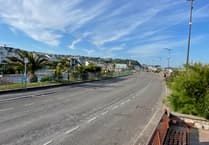TEIGNMOUTH is thriving whilst many other resorts flounder.
A new report by the Social Market Foundation has found Britain’s coastal areas are among the worst-performing in terms of pay, unemployment, education and health.
But local councillor David Cox said, Teignmouth seems to have bucked this trend, and is doing much better than most.
‘However, it’s a warning of what can happen. It requires constant effort to keep our town vibrant and prosperous. A partnership of local government, small traders and the voluntary sector is helping to keep the town punching above its weight.’
The economic gap between coastal and non-coastal areas has grown in the last ten years, the data shows. In 1997 gross added value (GVA )per head in coastal towns was 23 per cent lower than inland communities.
By 2015 – the latest data available – this gap had grown to 26 per cent. Five of the ten local authorities in Great Britain with the lowest average employee pay are in coastal communities, along with half of the local authorities with the highest unemployment rates in the country.
GVA is the measure of the value of goods and services produced in an area, industry or sector of an economy, in economics. In national accounts, GVA is output minus intermediate consumption; it is a balancing item of the national accounts’ production account.
Analysis of economic and social data at a local authority level by the Social Market Foundation think tank found that: five of the ten local authorities in Great Britain with the lowest average employee pay are in coastal communities – Torbay, North Devon, Gwynedd, Hastings and Torridge.
Last year, average employee pay was about £3,600 per annum lower in coastal communities than in other parts of Great Britain.





Comments
This article has no comments yet. Be the first to leave a comment.